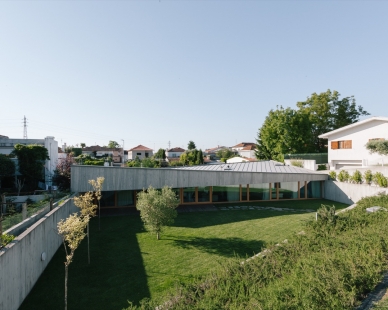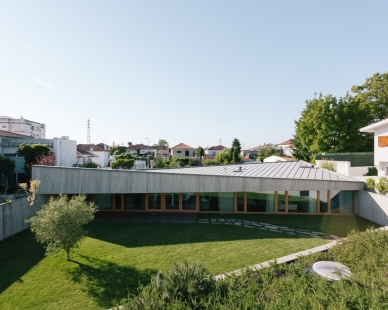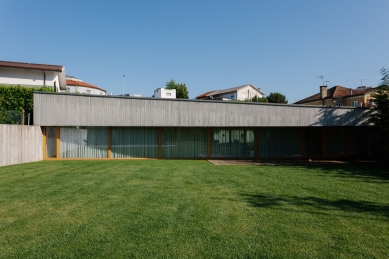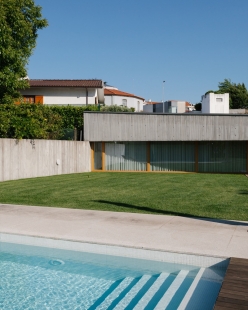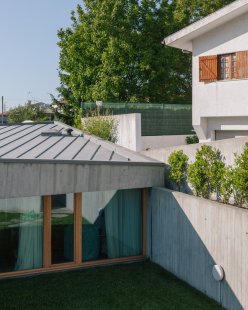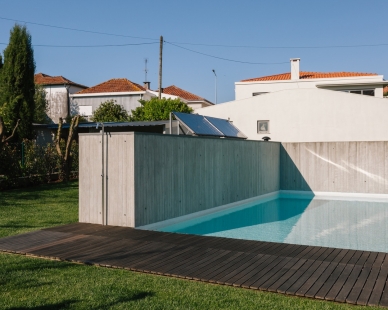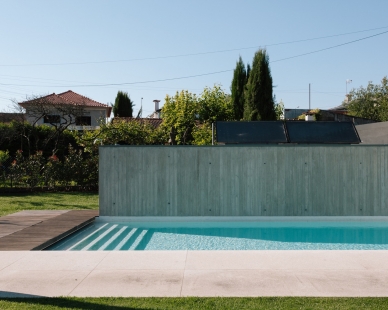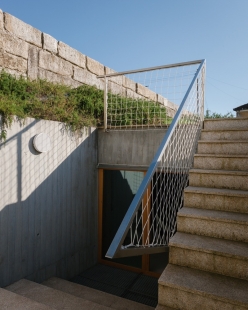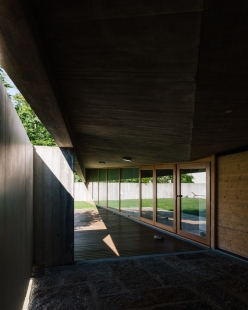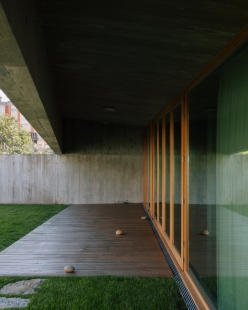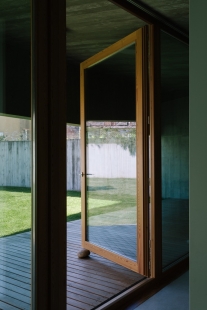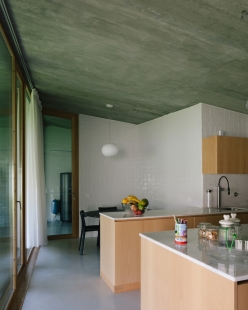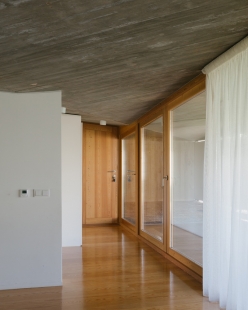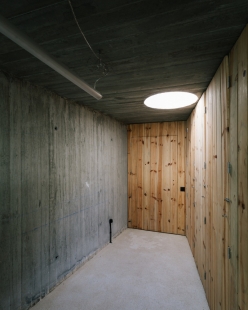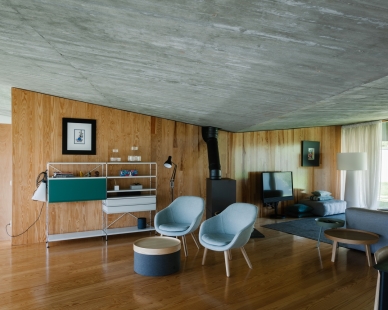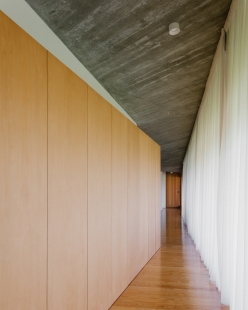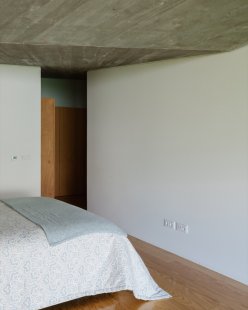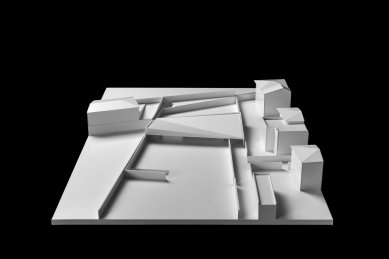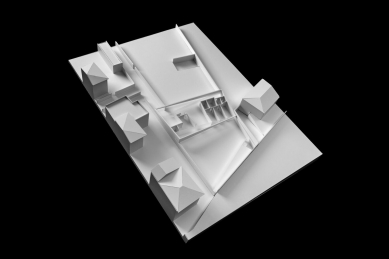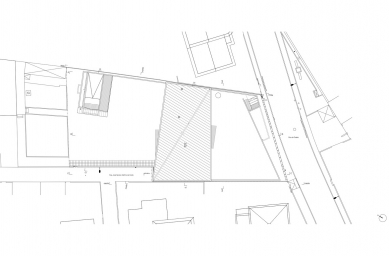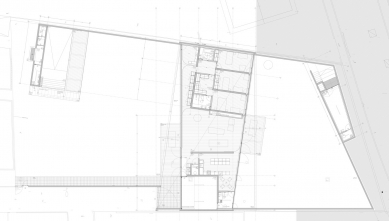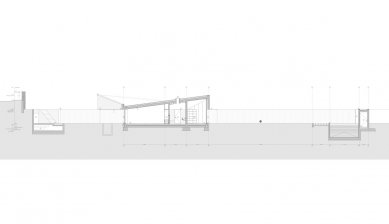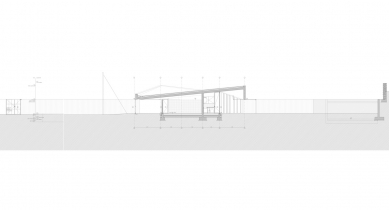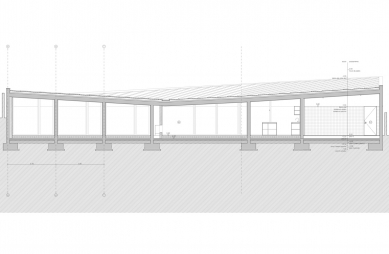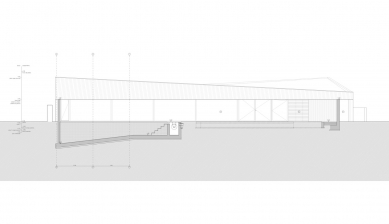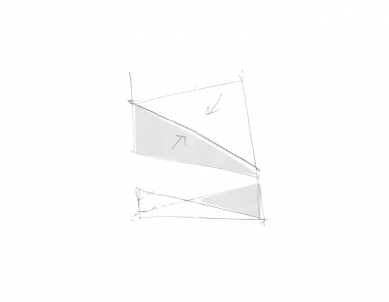
House in Santo Tirso 2

The house is spread over a generous plot, deeply set within the city’s road structure, at a lower level than the streets and surroundings. It extends spatially in a deliberately geometric composition, with lines perpendicular to the line of the boundary walls.
This layout results in a triangular space with an accelerated perspective, over which the domestic areas are arranged, adapted in dimension and functional sequence to the main figure, with circulation to the north and functions to the south, protected by the overhanging projection of the roof.
The roof of this space symmetrically inverts its geometry. An inverted pitched roof entirely covers the interior space, and at the edges, two triangular verandas extend the living space to the outside area. The house recalls a tent, the ridge of which crosses the space diagonally, creating an organic tension, emphasized by the dense weight of the exposed concrete innards that extend gravitationally over the fluid and continuous floor of the interior partitioning.
The organic and natural feel of the space is continued in its tectonic materialization. The thick Scots pine frames, in a triangular elevation, follow the definition of the boundary between inside and outside, with the interior surfaces covered with the formwork panels that allowed for the erection of the roof, with its two inverted pitches and triangular shapes.
This layout results in a triangular space with an accelerated perspective, over which the domestic areas are arranged, adapted in dimension and functional sequence to the main figure, with circulation to the north and functions to the south, protected by the overhanging projection of the roof.
The roof of this space symmetrically inverts its geometry. An inverted pitched roof entirely covers the interior space, and at the edges, two triangular verandas extend the living space to the outside area. The house recalls a tent, the ridge of which crosses the space diagonally, creating an organic tension, emphasized by the dense weight of the exposed concrete innards that extend gravitationally over the fluid and continuous floor of the interior partitioning.
The organic and natural feel of the space is continued in its tectonic materialization. The thick Scots pine frames, in a triangular elevation, follow the definition of the boundary between inside and outside, with the interior surfaces covered with the formwork panels that allowed for the erection of the roof, with its two inverted pitches and triangular shapes.
5 comments
add comment
Subject
Author
Date
Paráda
14.06.22 10:38
re: Paráda
redakce
14.06.22 02:02
not dead
15.06.22 07:24
retro
Vích
16.06.22 05:55
lidské měřítko
17.06.22 07:21
show all comments


